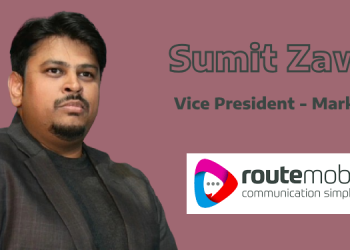Is the Tata Mumbai Marathon the second largest sports IP in India after the TATA IPL, both commercially and in terms of impact? With the Bandra-Worli Sea Link shut for 12 hours and 42kms full of runners, the Tata Mumbai Marathon (TMM) makes Mumbai, a city that never stops, pause and rest, even if just for a while.
Interestingly, both these marquee properties share the same title sponsor, Tata Sons. With an estimated title sponsorship value of ₹40 crore per year and a total sponsorship revenue of ₹60 crore annually (including all sponsorships), the Tata Mumbai Marathon clearly stands out in the Indian sports ecosystem. Comparatively, leagues like ISL and PKL have faced challenges in securing title sponsors over the past two seasons. Their last significant deals included Vivo’s ₹275-300 crore agreement for PKL over five years (averaging ₹55-60 crore per season) and Hero’s annual sponsorship of ₹50-55 crore for ISL before their exit.
Nike ambushing at Tata Mumbai Marathon, where Asics is the sports goods partner, by dominating the 42km stretch from Bandra to Chowpatty with orange hoardings and unofficial supporters waving Nike flags and cheering for runners at key points on race day, along with EUME (also a non-sponsor) making a half-marathoner run with a trolley suitcase to showcase its durability, reflects the kind of brand wars and creative tactics rarely seen outside the world of cricket.
According to GSIQ, a global research and insights agency, TMM has been valued at over ₹1,000 crores in brand and media evaluation for its intellectual property. Beyond media visibility, the true influence lies in the user-generated content, which significantly impacts the city, participants, and the extended ecosystem, creating deeper penetration for an event centered around distance running.

Launched in 2004 as the Standard Chartered Mumbai Marathon (SCMM), This initiative, launched four years before the IPL, not only laid the foundation forIndia’s participative sports culture but also set a benchmark for sponsorship mechanisms in the sporting landscape. Credit goes to Standard Chartered for supporting an audacious vision in 2004 and to Tata Sons for elevating it to new heights. Together, they’ve created a legacy that inspires millions and continues to set the pace for Indian Sports IPs.
What makes the Tata Mumbai Marathon even more remarkable is that it has been built predominantly through an exceptional on-ground presence, with limited reliance on live TV hours, an essential factor for amplification in spectatorial sports. Their massive expo (3-4 days long) attracts over a lakh footfall, including participants collecting their running bibs. This provides brands with a tremendous opportunity that extends beyond visibility, allowing them to interact, engage, and conduct commerce with a highly targeted audience actively seeking health, fitness, and lifestyle solutions.
Procam International, the creators of TMM, have revolutionised participative sports with a unique storytelling approach, developed with Initium Productions, that highlights extraordinary tales of amateur runners. Their mix of live coverage and pre-recorded human-interest stories has given TMM a distinctive identity, amplifying its impact and turning everyday runners into ambassadors for the sport. Spectatorial sports like Kabaddi, Football, Cricket, Table Tennis, and Kho- Kho dominate screens with extensive broadcasts, endless highlights, and tournaments spanning 3-6 months, offering countless moments of action and engagement. Yet, Procam has built a massive grassroots movement without such advantages.
The success of the Tata Mumbai Marathon proves that there is no single formula or textbook approach to building a thriving IP. While the current sports landscape heavily follows the IPL model, not every successful venture needs to be franchise-led tournaments or leagues. The key lies in developing a model that fosters large customer cohorts for sponsors while prioritizing a community- first approach. By engaging fans through a geographically focused strategy that attracts a strong audience and gradually scales up, an IP can achieve sustained growth. Events like the Nehru Trophy Boat Race in Kerala and Kodava Hockey Festival of Coorg exemplify how hyperlocal IPs can draw major sponsors, attract a wide audience, and fulfill the core pillars of community, culture, scale and commerce; ensuring long-term sustainability.
Understanding the ecosystem you operate in, is crucial, as it serves as the nucleus for the sport you represent. The emotions tied to a game are deeply woven into the belief systems of those who play it, and each sport carries its own cultural nuances – Kabaddi, for instance, is vastly different from football, cricket, badminton, volleyball, or golf. A thigh-five, for instance – the instinctive gesture a Kabaddi player makes after a successful raid or defense, has become a deeply ingrained tradition in the sport. It is embraced by players across the country, whether they compete in the PKL or not, seamlessly woven into their Kabaddi journey. The audience profile for each sport varies, and so should fan engagement initiatives and live programming. Only by aligning these elements can a sporting IP build emotional resonance and long-term loyalty. After all, in fan engagement, emotional quotient far outweighs rational quotient.
Every sport holds immense potential, and when nurtured in a way that genuinely impacts and benefits the community, the IP will not only thrive but also withstand the test of time.
(Views are personal).

















